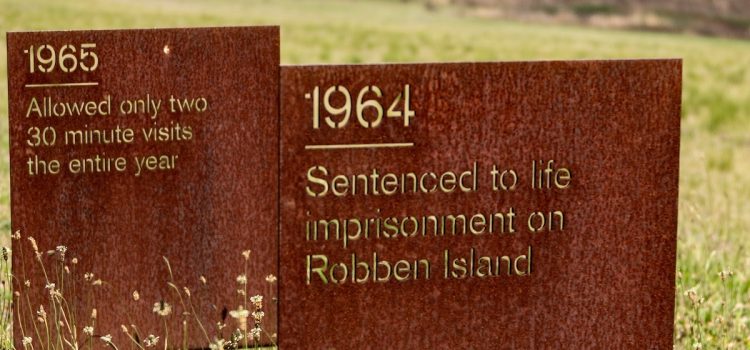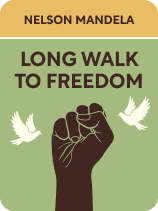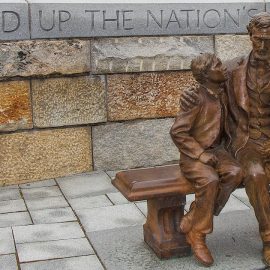

This article is an excerpt from the Shortform book guide to "Long Walk to Freedom" by Nelson Mandela. Shortform has the world's best summaries and analyses of books you should be reading.
Like this article? Sign up for a free trial here.
What was prison like for Nelson Mandela? Why didn’t he try to escape?
Nelson Mandela spent a total of 27 years in three prisons. He endured the worst 18 of those years, from 1964 to 1982, in Robben Island Prison. He writes about the experience in his autobiography, Long Walk to Freedom.
Read more to learn about Robben Island, Mandela’s first prison.
Mandela at Robben Island
For the first 18 years, Mandela was held in a brutal facility called Robben Island Prison. In Robben Island, Mandela notes, most inmates had no beds nor plumbing, and they spent their days doing hard manual labor. Furthermore, prisoners were almost completely isolated from the outside world—not even allowed visits from their families—and they were frequently forced into solitary confinement for minor infractions.
(Shortform note: Today, Robben Island is a museum that offers tours of the old facility, including Mandela’s tiny cell. Many of the tour guides are former prisoners—they tell stories of how Mandela, Sisulu, and others kept the prisoners’ spirits up, educated them, and helped them survive these harsh conditions of imprisonment.)
While enduring these harsh conditions, Mandela had to stay alert for attempts on his life. For example, a prison warden once offered to help him escape, but Mandela refused. He later learned that the warden was a plant from the Bureau of State Security, and he would have made sure that Mandela died during the “escape attempt.”
(Shortform note: While this attempt on Mandela’s life may seem shocking, assassination attempts are a common tactic for political extremists of all kinds. The goal is to eliminate “high-value targets,” important political figures whose death will (theoretically) destabilize the current government or weaken and frighten the opposition.)
Prisoner Protests at Robben Island
Mandela notes that, at Robben Island, the prisoners engaged in numerous protests against the prison’s inhumane conditions and practices. Most commonly, they went on hunger strikes. However, those strikes were frequently unsuccessful because they only worked if word about the protest spread outside the prison—otherwise, the inmates would simply starve themselves to death while the guards and wardens watched.
(Shortform note: Hunger strikes are effective in large part because they reflect poorly on the authorities. A government that lets people starve themselves to death instead of addressing their concerns is likely to face backlash from its citizens and, possibly, from the rest of the world as well. Furthermore, there’s a chance that dead hunger strikers could become martyrs, bringing more attention and more people to their causes. To avoid these problems, it’s often better for authorities to give in to the hunger striker’s demands or at least to start negotiating with them.)
Mandela says that he advocated for more disruptive forms of protest, such as refusing to work or refusing to clean. However, he was often outvoted, and he always supported the group’s decisions once they were made.
| Effective Protests Must Be Disruptive While Mandela’s comrades resisted his calls for more disruptive protests, he was arguably right to suggest them. Experts say that protests do need to be disruptive to be effective; they need to upset people’s routines and somehow force them to pay attention. What qualifies as a “disruptive” protest has changed over time. During the US Civil Rights Movement, for example, peaceful marches were uncommon enough—and therefore attracted enough attention—that they got people talking about civil rights issues. Today, however, such marches and demonstrations are routine; therefore, protestors are engaging in new tactics such as revealing private information about politicians or interfering with an administrator’s daily life. |

———End of Preview———
Like what you just read? Read the rest of the world's best book summary and analysis of Nelson Mandela's "Long Walk to Freedom" at Shortform.
Here's what you'll find in our full Long Walk to Freedom summary:
- Nelson Mandela’s extraordinary life story, as told by the man himself
- Why it took Mandela over 40 years to finish his law degree
- Nelson Mandela’s legacy and what South Africa is like in its post-apartheid years






